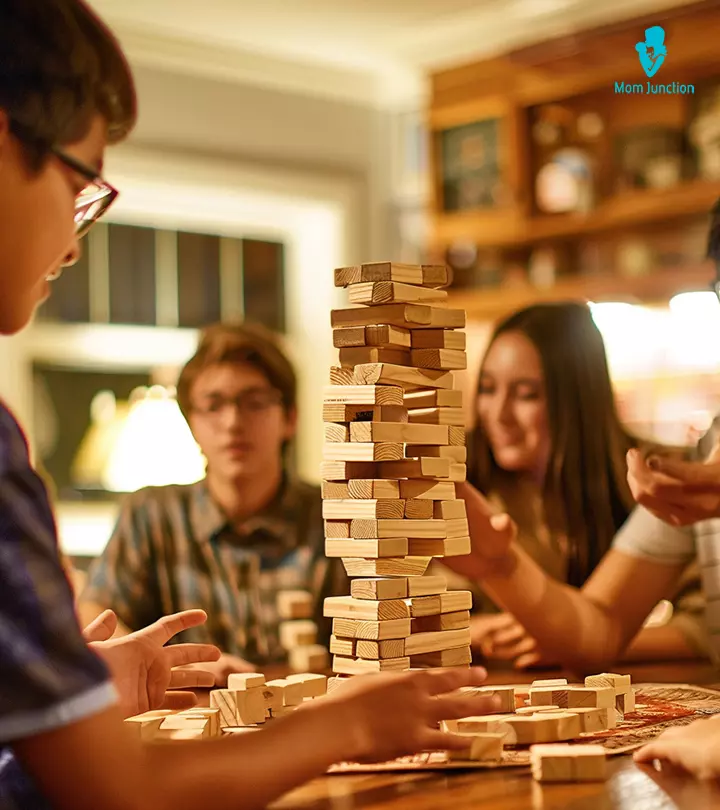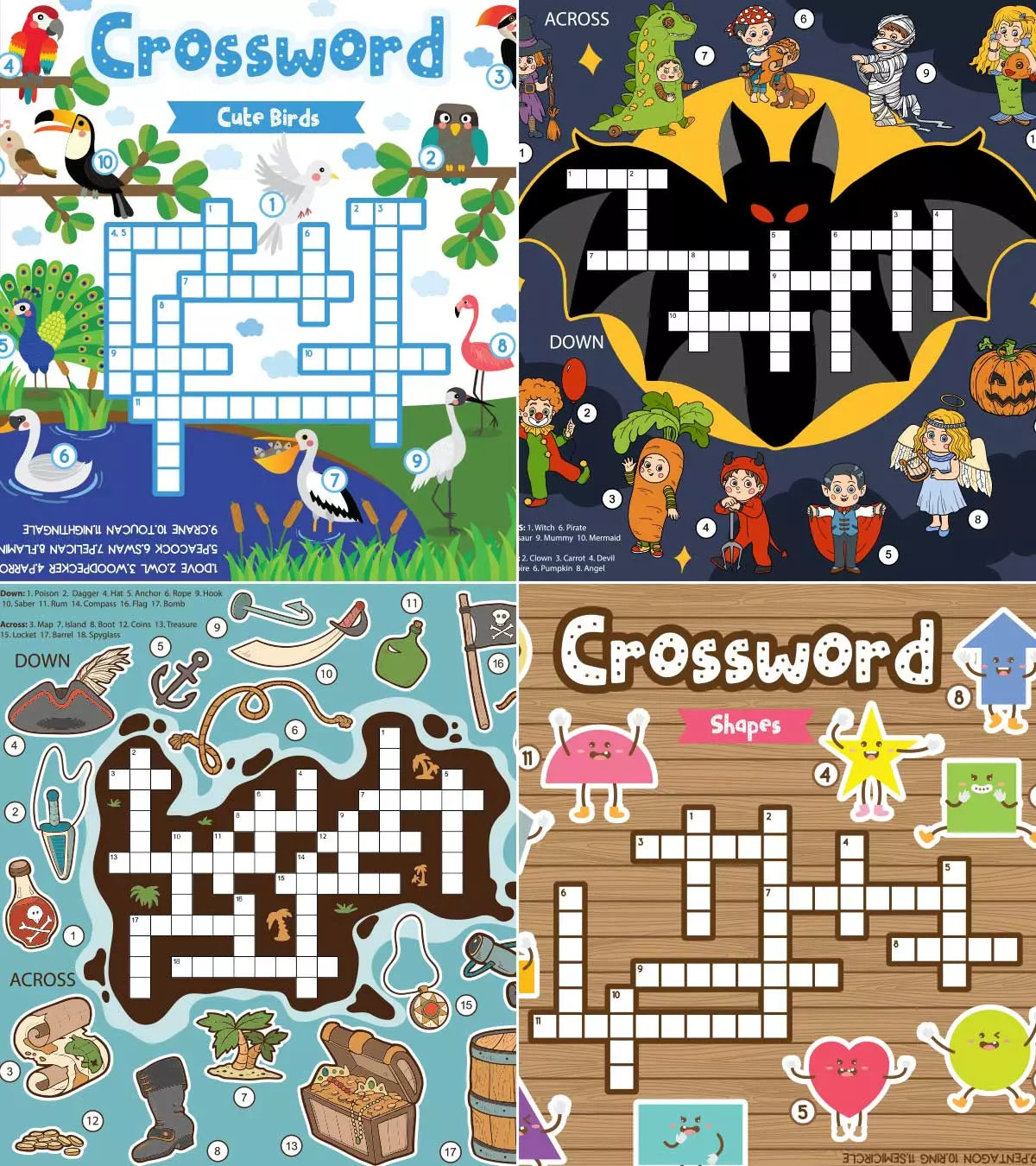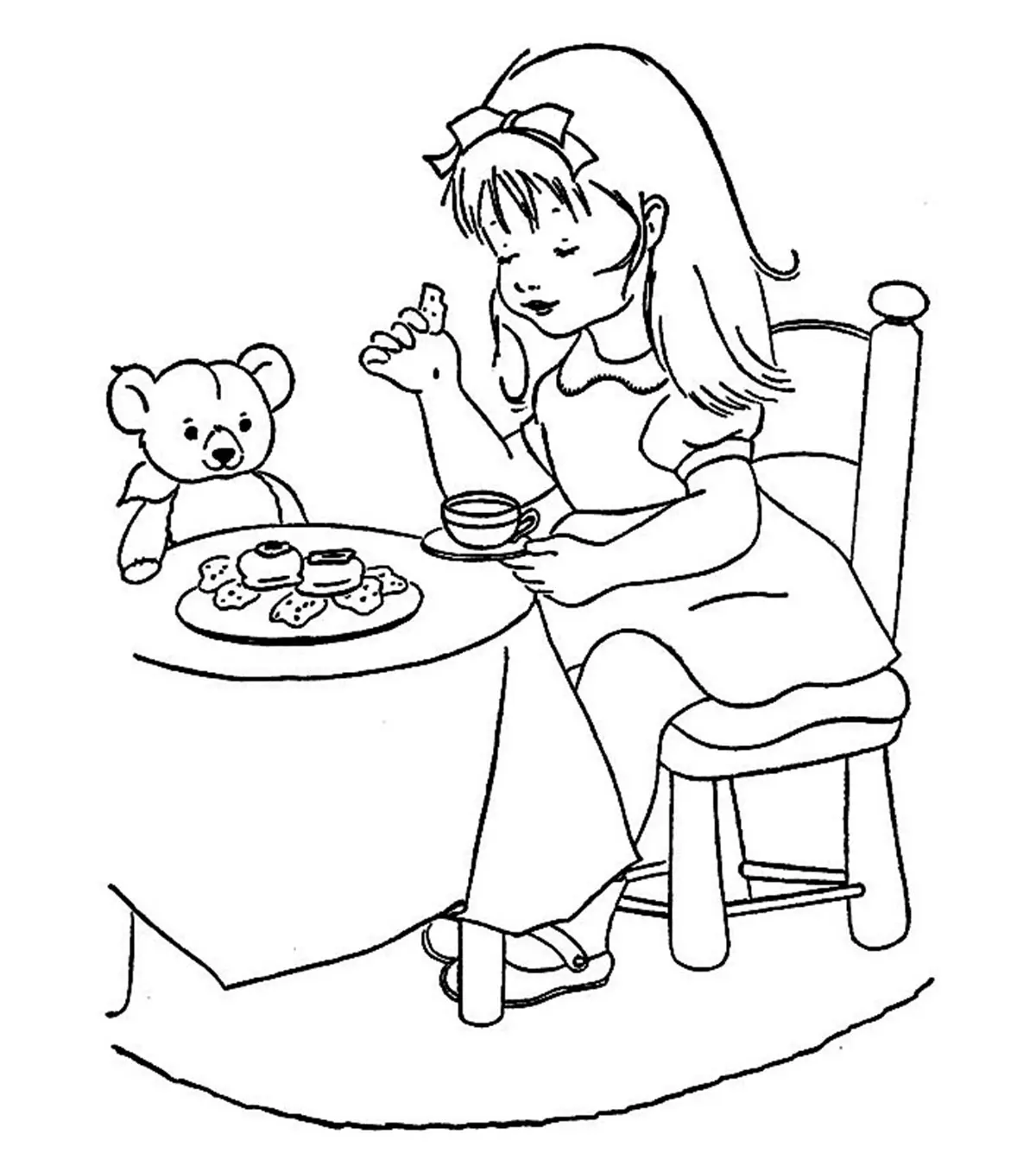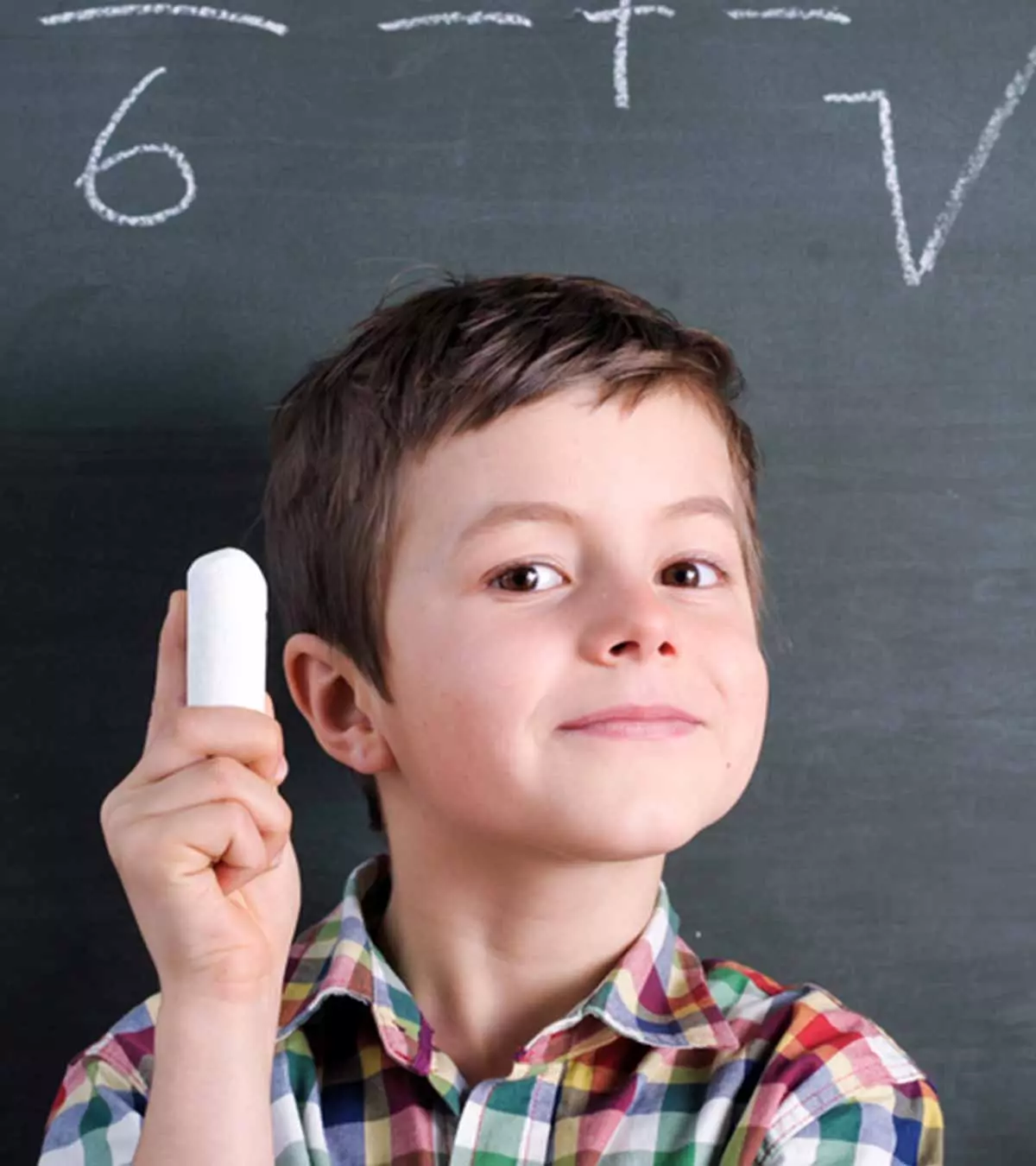
Image: Shutterstock
Math tricks for kids can make the subject more interesting and easy to understand the basic rules. There are many methods to solve a mathematical investigation, and knowing the tricks can help you solve it in a few steps. Although arithmetic is difficult to learn, it is logical. Therefore, math tricks can help the child to learn more easily. In addition, it is easier to follow math concepts such as calculus, algebra, and geometry in higher classes, if the fundamentals are strong.
Chintan, a father, firmly believes there are more ways than one to derive an answer to a mathematical problem. He says, “When my children encounter a difficult problem, I try and show them different ways to solve that problem. I aim to instill confidence that a problem can be solved. I utilize include reinforcement, tricks for counting on hands, Left to Right approach, and Vedic mathematics tricks, among others. Alternative ways of solving addition, subtraction, multiplication, and division problems expand their viewpoint and engages their creativity (i).”
Read on to learn some easy-to-remember math tricks that will enhance your kid’s interest in the subject.
Key Pointers
- Engage kids in learning math and make it more enjoyable for them by teaching mental math tricks.
- Teach tricks such as breaking down numbers to multiply, comparing fractions, and squaring two-digit numbers.
- Calendar magic, the answer is 1089, shoe math, and back to square one incorporates simple math ticks to make the concept understandable.
- Math stimulates the brain regions that enhance working memory and numerical quantity.
20+ Simple Maths Tricks For Children
Math tricks make learning math fun and interesting for children while improving their analytical skills and transforming their approach to the subject. Here are some math tricks you can teach your child.
1. Multiplication by breaking down numbers
This exciting math trick is useful in multiplying two two-digit numbers with ease and speed. Below are the steps that you should follow to get a quick answer.
Problem – 22 X 15 = ?
- Break down the first number into its multiples, i.e., 22 = 11 X 2.
- Multiply 2 with 15 (2 X 15=30) and their product with 11 (30 X 11 = 330).
- The answer for 22 X 15 is 330.
2. Multiply a multiple digit number by 5
Here’s a quick instruction to multiply multi-digit even numbers by 5.
Problem – 222 X 5 = ?
- Calculate half of 222, i.e., 111, and multiply the half by 10.
- 111 multiplied by ten is equal to 1110, the same as 22 X 5.
3. Multiply a single-digit number by 9 using hands

Image: IStock
Help your elementary school child to multiply any number between 1 and 10 by 9.
Problem – 9 X 5 = ?
- Keep the hands in the front with fingers spread.
- Bend the fifth finger (the fifth finger represents the number that you have to multiply by 9) on the left hand and count the unbent fingers. The answer should be 4 (first digit of the answer).
- Count all the unbent fingers on the right hand. The answer should be 5 (second digit of the answer). The final answer is 45.
 Fun fact
Fun fact4. Multiply a multiple digit number by 9
A quick trick to multiply a multiple digit number with nine by using the subtraction technique.
Problem – 122 X 9 = ?
- Add a zero at the end of the triple-digit number that you need to multiply by nine. In this case, the triple-digit number is 122, which becomes 1220, after adding a zero.
- Subtract 122 from the new four-digit number to get your answer (1220 – 122 = 1098).
5. Multiply a multiple digit number by 11
This simple trick teaches a fast method to multiply a two or three-digit number by 11 with relative ease.
Problem – 25 X 11 = ?
- Add 2 to 5 and place the sum in between the digits that you need to multiply by 11. The answer is 2 (2 + 5) 5 = 275.
Suppose the addition of the middle digit gives a two-digit number, then the trick has an additional step.
Problem – 88 X 11= ?
- After step 1, as shown above, the resulting equation will be 8 (16) 8.
- Add 1 (from 16) to the first 8 and shift 6 out of the bracket. The answer will be 8 + 1 (68) = 968.
6. Compare fractions easily
Comparing fractions can be challenging, especially when the denominator for given fractions is not the same.
In such cases, this easy trick can be of great help to children.
Problem – 7/8 and 6/9, which fraction is greater?
- Multiply the numerator of the first fraction with the denominator of the second fraction; the answer is 63.
- Multiply the second fraction numerator with the denominator of the first fraction; the answer is 48.
- As 63 is greater than 48, 7/8 is greater than 6/9.
7. Squaring a two-digit number ending with 1
Calculate the square of a two-digit number ending with one, with this trick.
- Select any two-digit number that ends with 1 and subtract 1 from it. For instance, if you select 51, then 51-1 = 50.
- Square the difference, i.e., 50 X 50 = 2500. Add the difference (50) twice to its square, so you get 2500 + 50 + 50 = 2600.
- Add 1 to the final answer, i.e., 2601, which is the square of 51.
8. Squaring a two-digit number ending with 5
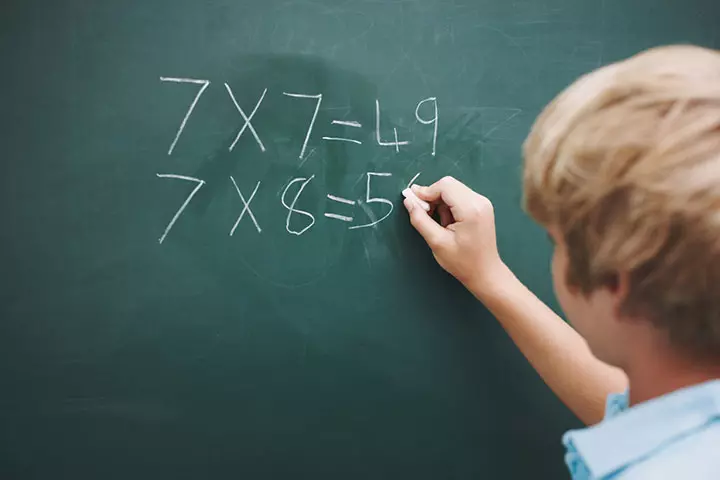
Image: IStock
A math trick to help calculate the square of a two-digit number that ends with 5.
Problem – (85)2 = ?
- To square 85, first do the last digit’s square, i.e., square of 5 (5 X 5 = 25).
- Now, add 1 to the first digit (8 + 1 = 9) and multiply the new number with the first digit (9 X 8 = 72).
- Prefix 72 to the first digit’s square (25), i.e., 7225, which is square of 85.
9. Subtracting a three-digit number from 1000
Subtract three-digit numbers from 1000 with these simple steps.
- Take a three-digit number, say 576. Here, the first digit is 5, the second is 7, and the third digit is 6.
- Subtract the first digit from 9 (9 – 5 = 4), the second digit from 9 (9 – 7 = 2), and the third digit from 10 (10 – 6 = 4).
- Place all the three answers in order and you get 424. This is the difference between 1000 and 576 (1000 – 576 = 424).
10. Contains numbers 1, 2, 4, 5, 7, and 8
The mind-bending, fun trick shows that a series of multiplication and division for any number between 1 and 6 gives an answer containing the digits 1, 2, 4, 5, 7, and 8.
- Choose any natural number between 1 and 6, say 4.
- Multiply the selected number by 9 and the product by 111. The answer is 3996.
- Multiply 3996 by 1001 and divide the final response by 7.
- The answer is 571428, which has all of the following digits – 1, 2, 4, 5, 7, and 8.
11. The answer is 1089!
This unbelievable math magic trick shows that the mathematical calculation and expressions of any random three-digit number will always be 1089.
- Select a three-digit number, say 712, and arrange its digits in descending order, 721.
- Next, arrange the number (721) in ascending order (127) and subtract it with the previous number (721 – 127 = 594).
- Now reverse the digits (495) and add it to its original form (495 + 594 = 1089). The answer will be in 1089.
 Quick tip
Quick tip12. Guess the age and the change

Image: IStock
Here’s a way to tell a person’s age and the change they carry in their bag/pocket by following some simple steps. Your child can try this fun trick with their friends to solve age and change probability.
- Ask the person to multiply their age by 2. So, suppose, the person’s age is 15, then the answer you will get is 15 X 2 = 30.
- Add five to 30 and multiply the answer with 50, which is 1750.
- Subtract 365 from 1750 and tell the person to add the change’s total value to the answer.
- Suppose the person has two 10 rupee notes as change, then 1385 + 20 = 1405.
- Add 115 to 1405 to get the final answer, which is 1520. In this answer, the last two digits indicate the total change amount that the person has, and the first two digits represent his/her age.
13. The answer would be 37!
The answer to your calculation will always be 37.
- Select any three-digit number with the same digits, like 555, and add the three digits (5 + 5 + 5 = 15).
- Divide the original number (555) with this sum of the digits, i.e., 555/15 = 37.
- You can try the same trick with other monodigit numbers, like 222, 333, 444, etc.
14. Calendar magic
Sharpen your child’s multiplication skills with this trick. Your child can make a 3 x 3 grid around nine numbers on the calendar and find their sum in a flash.
- Suppose the nine numbers in the 3 x 3 box are
| 14 | 15 | 16 |
| 21 | 22 | 23 |
| 28 | 29 | 30 |
- Locate the number in the middle of the square and multiply it by 9, i.e., 22 X 9 = 198. So, the sum of all the numbers in the box is 198.
15. Shoe math
Calculate your child’s age and shoe size by following a few simple steps.
- Multiply your shoe size (a whole number, like 8, 7, 10, etc.) with 5 and add 50 to the product.
- Suppose, your shoe size is 7, so 7 X 5 = 35 and 35 + 50 = 85.
- Multiply 85 with 20 and add 1015 to the product, (85 X 20) + 1015 = 2715.
- Subtract your birth year from 2715, i.e., 2715 – 2000 = 715. In the final answer, the first digit (7) represents your shoe size, and the last two digits (15) represent your age.
16. Six digits become three

Image: IStock
A six-digit number changes into three digits by dividing the number by 7, 11, and 13. To play this trick, the order of division is important. Below are simple steps to understand how the trick works.
- Write a three-digit number twice and make it a six-digit number, say 789789.
- Divide the number by 7 and the quotient by 11. The answer will be 10257.
- Now divide the answer (10257) by 13, and the final answer will be the three digits used to make the six-digit number, i.e., 789!
- You can try this trick with any six-digit number with the last three digits the same as the first three digits.
 Did you know?
Did you know?17. Super simple divisibility rules
You don’t have to calculate to know if a number is divisible by a fixed divisor. Simple divisibility rules can help you know about divisibility and perform calculations faster without complexity.
Divisibility rules
The number is
- Divisible by two if the last digit of the number is a multiple of 2.
- Divisible by 3 if the sum of all the digits is divisible by 3.
- Divisible by 4 if the last two digits of the number are divisible by 4.
- Divisible by 5 if the last digit of the number is 0 or 5.
- Divisible by 6 if the number is even and divisible by both 2 and 3.
- Divisible by 9 if the sum of all the digits is divisible by 9.
- Divisible by 10 if the number ends with a 0.
- Divisible by 12 if the sum of all digits is divisible by 3 and the number formed by the last two digits is divisible by 4.
18. Division by subtraction
Division is repeated subtraction, and this simple math trick uses this concept to make division of three-digit numbers less intimidating to children.
Problem – 168/24 = ?
In this trick, subtract the divisor (24) from the dividend (168). The answer is 144.
Keep subtracting the answer with 24 until you get a number less than 24. For the above example, 24 is subtracted 7 times (including step 1) to get a number less than 24.
The number of times 24 is subtracted gives you the quotient/answer. So, the answer for 168/24 is 7.
19. Back to square one
A series of calculations can bring you to the same point from where you started.
- Choose any two natural numbers between 1 and 9. Suppose you pick 2 and 8.
- Now, pick one number and multiply it by 2 and add 5 to the answer. Let’s select 2, so the calculation will be (2 X 2) + 5 = 9.
- Multiply 9 by 5 and add 8 (the number that we selected in step 1) to the answer, i.e., (9 X 5) + 8 = 53.
- Subtract 4 from 53 and 21 from the final answer to get a two-digit number, which will have the same digits (2 and 8) that you selected at the beginning of the trick!
20. Memorizing the value of Pi

Image: IStock
Pi is a mathematical constant, which is equal to 3.141592. Remembering this value can be a challenge until you try the below-given fun math trick.
- Write the following sentence on a plain sheet of paper using a pen/pencil. – “ How I Wish I Could Calculate Pi”
- Now, count the number of letters/alphabets in each word and write it below the specific word. For instance,
- HOW = 3
- I = 1
- Wish = 4
- I = 1
- Could = 5
- Calculate = 9
- Pi = 2
- Arrange the numbers with a decimal after the number 3. It gives you Pi’s value – 3.141592.
21. Adding large numbers
While addition may seem straightforward, tackling large numbers or calculating substantial sums can be time-consuming. Here are some strategies to expedite the addition process.
- Break numbers down
Addition becomes more challenging when dealing with numbers that are not neatly rounded. For instance, adding 93 and 29 together may pose a momentary challenge, even for those adept in math. This can be especially overwhelming for young learners, leading to discouragement.
- Chunking numbers
To simplify such additions, break down the numbers into more manageable chunks. Take the example of 93+ 29:
- 93 = 90 + 3
- 29 = 20 + 9
- Easier subtotals
By breaking the numbers into these chunks, you create easier subtotals:
- 90 + 20 = 110
- 3 + 9 = 12
- Combine subtotals
Finally, add the two subtotals together
- 110 + 12 = 122
By employing this method, the mental calculation becomes more accessible, and you arrive at the answer, making the process notably simpler.
Frequently Asked Questions
1. How does math impact the brain of kids?
Early math activities and learning stimulates and generates an enhanced response from brain regions–dorsolateral prefrontal cortex and intraparietal sulcus. The former manipulates the information in working memory, while the latter represents numerical quantity (1).
2. Does math improve the critical thinking of kids?
Yes, math is believed to aid in the development of critical thinking. Problem-solving by repeated trial and error methods and trying different ways to solve an equation may help stimulate their thinking ability (2).
3. Can math tricks be useful for solving more advanced math problems?
Math tricks provide helpful problem-solving processes, allowing you to find an answer more quickly and efficiently. These shortcuts or patterns may help save time and effort when working on complex math problems. However, it is crucial to note that while math tricks can be helpful, they are not a substitute for understanding underlying mathematical concepts.
4. Can math tricks be used as a supplement to traditional math instruction?
Math tricks may supplement traditional math instruction, as they serve as additional tools and strategies to reinforce learning, enhance problem-solving skills, and make math more engaging and fun for students. However, they should be used along with the fundamental math principles, not as a replacement for them, to ensure a balanced conceptual understanding of the subject.
5. Can math tricks help kids prepare for math competitions or tests?
Yes, math tricks can be beneficial for helping kids prepare for math competitions or tests. Math tricks can provide valuable strategies and techniques to boost problem-solving abilities, increase efficiency, and build confidence. However, they should not replace a solid understanding of mathematical principles and procedures.
Math tricks and puzzles for kids, such as different multiplication and divisible tricks, squaring, comparing fractions, distance and measurement, guessing the age and the change, shoe math, and so on, are a fun way to teach children the basics of math, such as addition, subtraction, and multiplication. Doing these math activities for kids might help your child develop an interest in math and get their worksheets flowing. Some of the tricks may be tough for them to learn at first, but with enough practice with the guidance of a teacher, your child can master them and use them to answer mathematical problems quickly without inaccurate estimation.
Illustration: Easy Math Tricks For Kids To Improve Analytical Skills

Image: Dall·E/MomJunction Design Team
Learn 2 to 9 times multiplication tricks in an easy and fast way! Math tips and tricks to help you master multiplication quickly. Get ready to ace your math tests!
Personal Experience: Source
MomJunction articles include first-hand experiences to provide you with better insights through real-life narratives. Here are the sources of personal accounts referenced in this article.
i. Math tricks and techniques for young children; https://cdsngconsulting.medium.com/math-tricks-and-techniques-for-young-children-62439d7bbad9References
- Adding it up: Research shows how early math lessons change children’s brain;
https://med.stanford.edu/news/all-news/2011/06/adding-it-up-research-shows-how-early-math-lessons-change-childrens-brains.html - Creative and Critical Thinking in Primary Mathematics;
https://www.monash.edu/education/teachspace/articles/creative-and-critical-thinking-in-primary-mathematics
Community Experiences
Join the conversation and become a part of our nurturing community! Share your stories, experiences, and insights to connect with fellow parents.
Read full bio of Elisabeth Daly
Read full bio of Harshita Makvana
Read full bio of Deepa Thomas
Read full bio of Kavita Kankani







